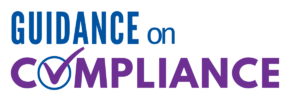Have you ever heard the term “improbable” day as it relates to coding and billing direct, one-on-one CPT Codes in Healthcare? You might be more familiar with the term “impossible day.” They both imply an improbable scenario of coding and billing volume in a given claim date based upon data analysis of payor paid claims. Based upon CPT Code definitions, attendance requirements, and clinician availability on a given claim date data analysis can flag providers who may be delivering more one-on-one CPT Codes day than time permits. The OIG (Office of Inspector General), The Department of Health and Human Services (DHHS), and The Department of Justice (DOJ) are aware and data mine claims data to analyze improbable day scenario providers. DHHS and the DOJ released healthcare fraud and abuse audit findings of 2022 claims data in November 2023.
Several audits underway were of no surprise, but the addition of physical and occupational therapy improbable days was new to the list. In the report over 56 billion professional claim lines were submitted by partners through FY 2022 for the purpose of conducting cross-payer analyses. The HRPP conducted thirteen studies during FY 2022 providing participating partners with detailed results that can be used for corrective actions within their organizations. 2022 paid claims for PT and OT practice providers and owners are under audit for improbable day billing by provider which may lead to joint payor, DHHS, and DOJ investigation in the future.
How would DHHS and the DOJ investigate improbable days?
The answer is data mining and analytics. When you submit your claims, either 1500 or UB-04 claim forms, DHHS can analyze the paid claims by claim date and calculate the total one-on-one CPT Codes paid. DHHS utilizes retrospective analysis to identify instances where a provider likely could not have provided the direct one-on-one CPT codes on the claim date.
What situations could contribute an impossible day scenario?
Often the primary root cause for an impossible day scenario is scheduling gone bad. Some patients come early, others come late, someone calls out; another patient wants to be fit in… the front desk is trying to please all the patients. The provider gets overloaded and has too many patients. What is a provider to do?
LWCI consultants have conducted numerous impossible day audits over the years, often when organizations are involved in a transaction. The typical root causes our team has identified which contribute to improbable day scenario risks are as follows:
- Providers lack a full understanding of payors following Federal Billing guidelines established by the Centers for Medicare and Medicaid Services (CMS) concerning the interpretation of direct one-on-one guidance.
- Providers recording time in and time out many times documented more one-on-one direct minutes than was allotted on the patient schedule.
- Providers lacked sufficient staff within the clinic to support one-on-one CPT Codes billed for the same claim date.
- Providers utilized unlicensed staff to supervise activities, which were then billed as direct one-on-one licensed therapy services.
- Providers consistently provided the minimum threshold of minutes allowed to bill a one-on-one CPT code per the CMS 8-minute Rule. For example, consistently billing 38 minutes to bill three (3) one-on-one units. Although allowable by the CMS 8-Minute Rule, consistently providing 38 minutes could become a red flag in the DHHS and DOJ data analysis of paid claims. It is not likely that exactly 38 minutes would be utilized in every scenario. Variation is expected as time should vary with patient needs and abilities.
How do you audit for improbable day scenarios?
LWCI recommends pulling billing reports from your electronic health record (EHR) by provider for a high-volume day and analyze the total one-on-one CPT codes billed compared with licensed staffing levels. If you have concerns, consider a schedule audit. A schedule audit compares the schedules, payors, daily notes, and CPT Codes billed in support of the paid claims. Providers can also analyze the use of CPT Code 97150, the group CPT code. During high volume, limited staffing, or planned time off, one would suspect decreased intensity/volume of one-on-one billing or increased use of 97150.
LW Consulting, Inc. (LWCI) offers a comprehensive range of services that can assist your organization in maintaining compliance, identifying trends, providing education and training, or conducting documentation and coding audits. If you would like to discuss a scheduling audit to find out if you are at risk for being identified for improbable day scenarios, contact Kay Hashagen to discuss your needs by emailing Khashagen@lw-consult.com or calling (410) 207-8338.

